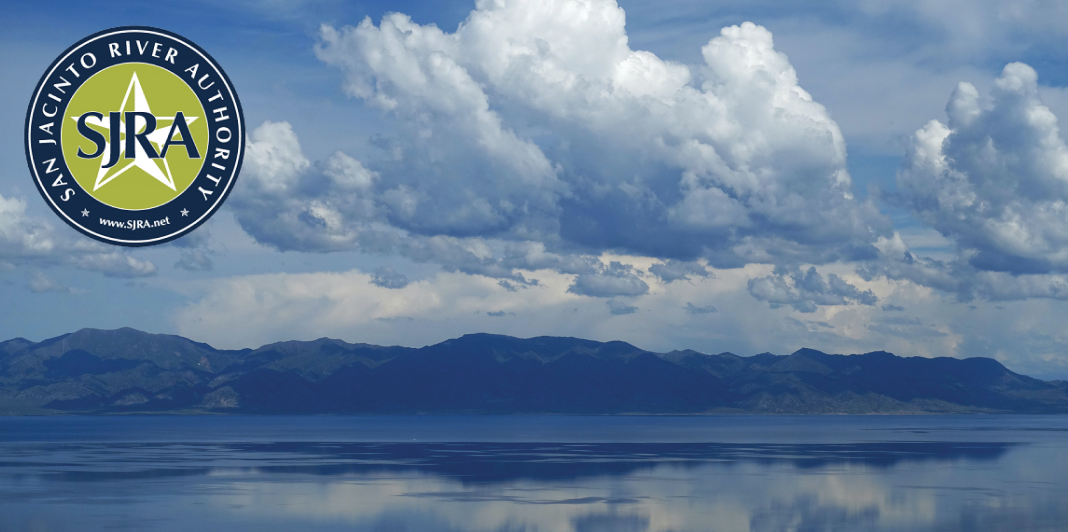According to the Harris-Galveston Subsidence District (HGSD), land subsidence is the sinking of the earth’s surface due to subsurface (underground) movements. Land subsidence occurs when large amounts of groundwater have been excessively withdrawn from an aquifer. The clay layers within the aquifer compact and settle, resulting in lowering the ground surface in the area from which the groundwater is being pumped.
Land subsidence occurs when large amounts of groundwater have been excessively withdrawn from an aquifer.
Over time, as more water is removed from the area, the ground drops and creates a cone. Once the water has been removed from the sediment, it cannot be replaced. For example, only about 5.3 million acre-feet of the total rainfall “recharge” Texas aquifers each year. However, in 1996 approximately 9.9 million acre-feet of groundwater were pumped, resulting in a net loss of 4.6 million acre-feet of groundwater.
Land subsidence can lead to many problems, including changes in elevation; damage to structures such as storm drains, sanitary sewers, roads, railroads, canals, levees and bridges; structural damage to public and private buildings; and damage to wells. Most commonly, though, subsidence is known for causing an increase in the potential for flooding.
Because of the growing awareness and concern of subsidence-related problems, the 1975 Texas legislature created the HGSD. Their mission is “to control subsidence and manage groundwater resources in Harris and Galveston Counties through regulation of groundwater withdrawal, conservation, and cooperation with surface water suppliers to assure adequate future supplies of water for beneficial uses.”
Most commonly, though, subsidence is known for causing an increase in the potential for flooding.
“In the Houston-Galveston region, subsidence is the lowering of the land-surface elevation caused by aquifer depressurization and compaction due to groundwater withdrawal. Subsidence can contribute to increased flooding and infrastructure damage. The Harris-Galveston Subsidence District (HGSD) monitors subsidence through an extensive GPS network spread across eight counties. HGSD, in cooperation with The Woodlands Water Agency and the San Jacinto River Authority, recently added a continuously operating reference station (CORS) in The Woodlands less than half a mile north of Spring Creek. This new CORS, named P112, expands the HGSD CORS network coverage in the area, compliments the GPS subsidence network currently maintained by the Lone Star Groundwater Conservation District, and will add additional data to better understand subsidence trends in The Woodlands and surrounding communities.”
-Ashley Greuter of HGSD
The United States Geological Survey maintains 14 borehole extensometers in the Houston-Galveston area. The goal of these extensometers is to measure compaction from different aquifers. HGSD has a number of CORS sites that are used to monitor subsidence. CORS (Continuously Operating Reference Station) sites continuously measure subsidence around the clock.
One of HGSD’s CORS sites is located in The Woodlands. Last month, HGSD worked alongside SJRA to get the CORS site up and running. Below are some pictures of the HGSD’s CORS site on SJRA property.
“As a Grogan’s Mill Village Director I became aware of how important subsidence was to our residents. Having a CORS subsidence measuring device in the Village seemed to me to be a good idea. I worked with Ron Kelling of the SJRA and Mike Turco of HGSD to create the idea. We then received help from Samantha Reiter for the LSGCD Board. Jim Stinson of Woodlands Water coordinated all the agreements. Grogan’s Mill Village also contributed to the funding. I am very pleased for all the help I received on this project and I know the residents appreciate it.”
–John Yoars
Before installation
After installation
John Yoars, Woodlands MUD #36 Director, Mike Turco, General Manager, Harris Galveston Subsidence District, and Matt Corley, Customer Service & Compliance Manager, San Jacinto River Authority visit the newly installed CORS site
One of the major river authorities in Texas, SJRA’s mission is to develop, conserve, and protect the water resources of the San Jacinto River basin. Covering all or part of seven counties, the organization’s jurisdiction includes the entire San Jacinto River watershed, excluding Harris County. For additional information on SJRA visit our website at www.sjra.net, like SJRA on Facebook @SanJacintoRiverAuthority, follow us on Twitter @SJRA_1937, find us on Instagram @sanjacintoriverauthoritySJRA, or connect with us on LinkedIn @San Jacinto River Authority.















